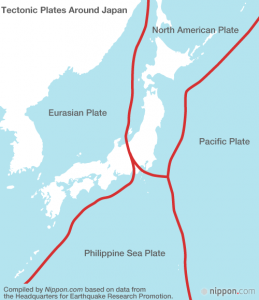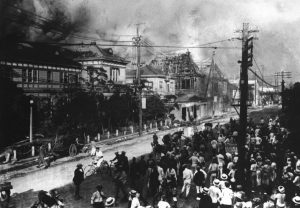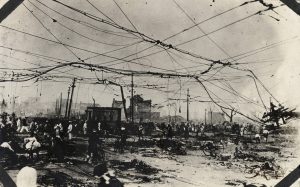History of Seismic Activity

The earthquake shook the Kantō region of Japan, otherwise known as the Greater Tokyo Area. The seven prefectures that make up this region are home to the most destructive earthquakes in Japan’s history, such as the Genroku earthquake of 1703, the Kantō earthquake of 1923, and the more recent Tohoku earthquake in 2011. These earthquakes, caused by the shifting Pacific, Eurasian, and Philippine sea plates have killed over half a million Japanese citizens. In addition, the Japanese government has lost over $1.5 trillion as a result of the material destruction from these major earthquakes (Schencking 2013). Yet despite being considered one of the most “seismically vulnerable places” on the planet, at the time of this disaster, just under a third of the entire Japanese population lived in the Kantō region. In fact as of 2019, the number of residents residing in the historically dangerous Kantō region has increased to just over 35 percent (“Prefecture Populations” 2020).
Two Minutes Before Noon

Two minutes before noon on September 1st 1923, a gigantic 7.9 magnitude earthquake ripped through the Kantō region of Japan. It mostly affected densely populated Tokyo and the port metropolis city of Yokohama. As any earthquake does, the tremors shook flimsy buildings, cracked city pavements, uprooted telephone poles, and broke water pipes all over the region. But the Kantō earthquake was not like other earthquakes. To put the magnitude in perspective, this earthquake released energy that is said to be equal to the detonation of 400 Hiroshima-size atomic bombs (Schencking 2008, p.299). The tremors were so powerful that far off mountainous areas such as the Kanagawa and Nebukawa prefectures felt the effects as well. Landslides pushed entire villages to sea, and in one horrific incident, a collapsing mountainside drove a train full of a hundred people to instant death in the ocean.

Surprisingly, the most destructive part of this disaster was not the earthquake itself but the subsequent fires that engulfed the region. When the earthquake hit, many people were preparing lunch using open fires or active stovetops. While desperate citizens fled to safety, the shaking ground toppled over these stovetops and started around 130 small fires. Japan was unlucky that day. With a combination of high winds from a typhoon from the West, and no access to water from the shattered pipes, these small flames became unstoppable firestorms. The fires, described as “undulating waves and whirlpools of flames” (Schencking 2008, p.300), took two days to extinguish. Within this time, they destroyed the region with ease – specifically targeting wooden buildings in dense cities.
The Resulting Chaos
The earthquake and fires obliterated the once bustling Tokyo and Yokohama cities. Over 130,000 civilians lost their lives. Those who survived, lost their livelihood. The earthquake and fires left just under sixty percent of people living in Tokyo, and ninety percent of people in Yokohama, homeless. As they aimlessly wandered the rubbled streets of Tokyo, many wandered how the country could possibly recover from the total destruction of their capital.

September 1st, 1923 went down in Japan’s history as the day the “foundations of the capital’s economic organization” were completely destroyed. Along with the demolition of homes, those “engaged in commerce had been thrown into extreme confusion and disorder”, as the physical destruction undermined the ability of markets to work as normal (Hunter 2014, p.755). Gas, electricity, and water were nonexistent for weeks following the earthquake. Three fourths of the city’s factory machinery hid within the heaps of rubble. As post offices, telegraph poles and railroads were wrecked, the communication and traffic systems in Tokyo were “entirely dislocated and completely paralyzed”. This made it extremely difficult for the city to call out for national and international help. In addition, since the rest of the country relied on network routes through Tokyo, this disaster impacted communication in regions as far as Hokkaido. In this way, much of Japan, no matter how far from the initial quake, felt and suffered from the effects of this major disaster. In total, Japan suffered material losses of 5.5 billion yen, which is close to $805 million USD today. Despite a banking crisis in 1927, Japan’s finances remarkably recovered and the country now boasts the third largest economy in the world (Silver 2020).
*(Taylor 2011)